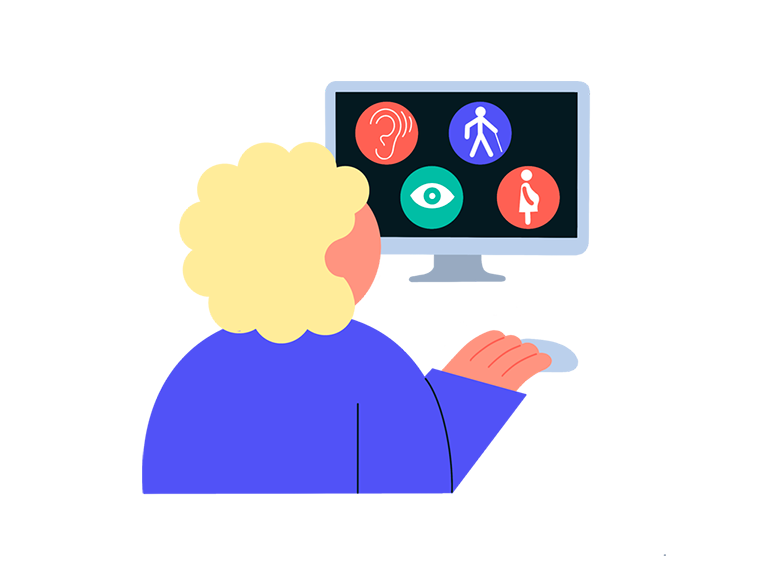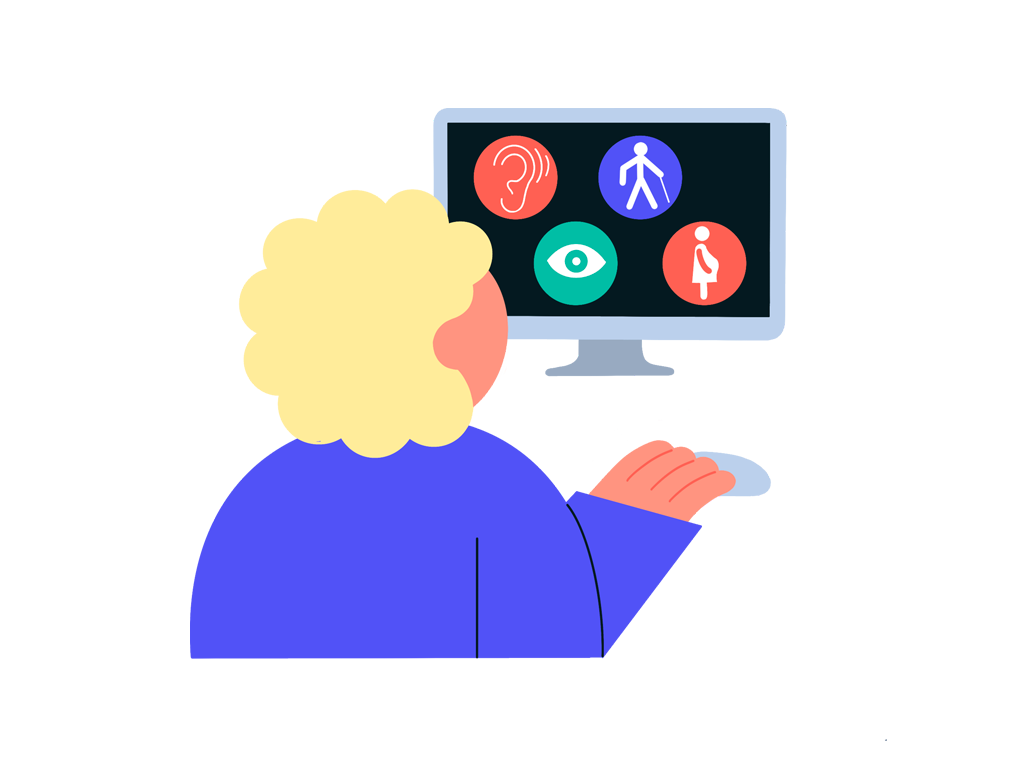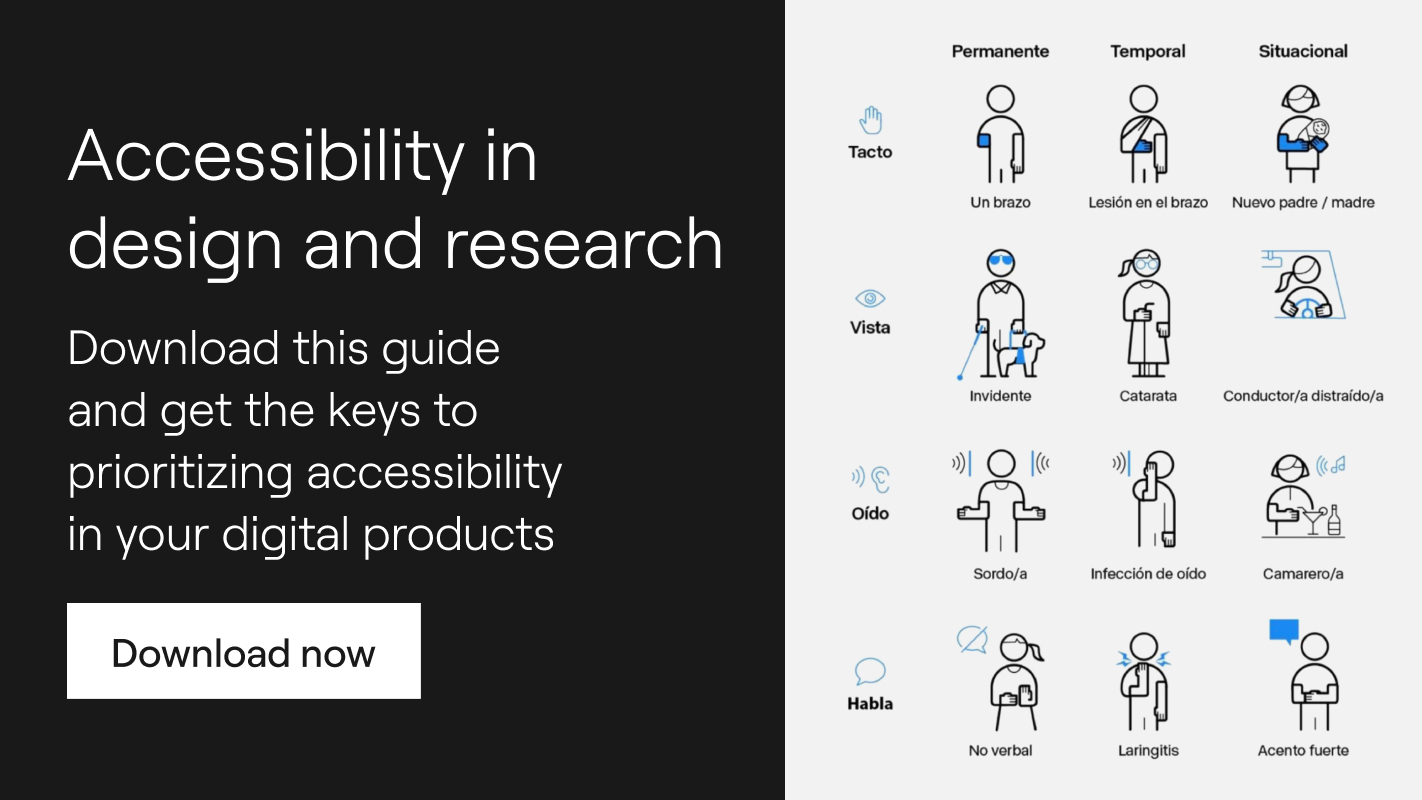Accesibility is a necessity
What leads us to reflect on the need to implement design and research that prioritizes accessibility?
Some facts:
- Today, 27 per cent of the population over 16 years of age have some form of disability.
- This percentage increases considerably if we take into account temporary disabilities: if we forget the mouse at home for a meeting, we will have to navigate with the keyboard. If we want to watch a video but don't have headphones, we'll miss subtitles if we're in a library. If we push a cart, we'll need to be able to navigate our mobile device with one hand...
- Accessibility is therefore not an optional feature, but a necessity to ensure the inclusion of all people.
- Accessible design not only benefits people with disabilities, it also enhances the user experience, taking into account factors such as colour, contrast, typography or navigation.
- In a recent study by Prodigious Volcano on accessibility (in Spanish) 91% of respondents claim to have abandoned some digital process due to technical problems related to the website itself.
For these and many other reasons, designing an accessible product has become a universal necessity in any digital business.
The integration of the concepts of universal design, aimed at the entire population, and accessible design, which takes into account the limitations of our users, leads us to the idea of Universal Accessibility.
The regulations established by the European Accessibility ACTA 2019 require the member states of the European Union to comply with certain accessibility standards. Mandatory for new products and services by 2025 and extended to existing products and services by 2030. To comply with this policy, we may use the Web Content Accessibility Guidelines (WCAG).
In the guide Accessibility Best Practices in Design and Research I have shared with my Runroom Experience Design team the main learnings and some keys about accessibility in design and research.
It is crucial to consider the interactions of the website. focusing on giving control and time to users, providing clear instructions and text for screen readers
In addition to the technical aspects, attention to the content of the website is essential. Conventions that guide users on necessary actions, along with clear and structured language, are essential.
When planning the web, we highlight the business benefits of greater accessibility, such as easier product search and use, increased audience and commercial appeal, cost savings and compliance.
Color and navigation are essential aspects to address from an accessibility standpoint.
In color choice, we must consider potential limitations such as color blindness, different cultural interpretations of colors, and associations with stereotypes or politics. The solution to this problem does not necessarily involve changing colors. We can use textures or other graphic elements to aid differentiation.
Regarding navigation, it's essential to position elements according to expected conventions to facilitate the browsing experience. Clarity and sharpness in navigation are crucial for individuals with limited attention spans or short-term memory difficulties. Additionally, the use of descriptive labels will help users understand where each menu item leads.
Inclusiveness from the Sprint 0
In the research and design process, we must take into account and include a diverse audience, with visual, auditory, motor, cognitive, vestibular and environmental limitations, present in different degrees and situations.
To positively impact the user experience, it is essential to create a web design that is easy to see, hear, interact and understand.
How to achieve effective accessibility on my website
Here are some tips:
- Plan improvements with lower costs and a significant impact on more users.
- Ask yourself about the goals and constraints of the user, the desired experiences and the adaptability of the web to different platforms, browsers and devices.
- Avoid victimistic language towards people with disabilities, separate usability problems from accessibility problems.
- Map problems using the WCAG guide, follow that guide.
- Consider recordings of navigation in the conclusions.
- Mindset de accessibility. Change will be effective if we all have this mindset: from Product Owners to Designers, we must focus on elements that facilitate accessibility.
Download the accessibility guide
Please find the link to download the Accessibility Best Practices Guide in Design and Research that I've shared with my Experience Design team. I hope you find it useful.


